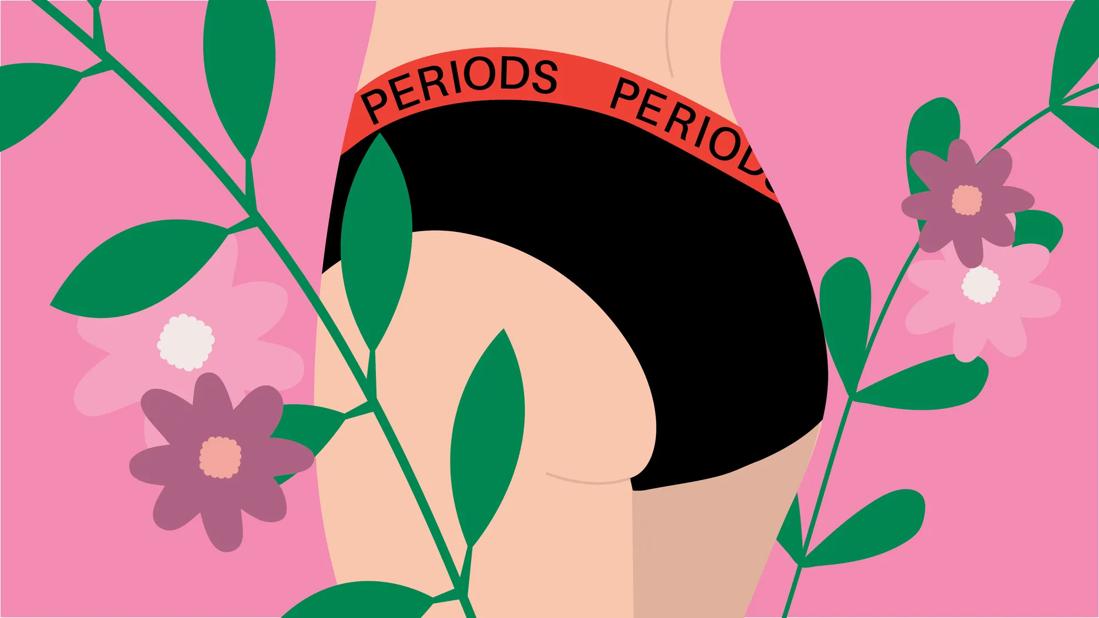If you wash regularly and change your underwear as needed, this can be a safe (and liberating) alternative to pads and tampons

Being caught without a pad, tampon or menstrual cup during your period can be a real bummer. But does it have to be? More and more women are embracing the concept of free bleeding.
Advertisement
Cleveland Clinic is a non-profit academic medical center. Advertising on our site helps support our mission. We do not endorse non-Cleveland Clinic products or services. Policy
Gynecology physician assistant Katherine Murad, PA-C, explains what it is, why it’s becoming popular and how to do it safely.
Free bleeding is exactly what it sounds like: it’s letting your period blood flow, instead of catching it with a tampon, pad or menstrual cup.
You can free bleed into specially made absorbent clothing — particularly “period panties.” Or you can dress in dark colors that hide the stains. Or maybe you want your blood to be visible. (More on that in a bit.)
The “when” of free bleeding varies from person to person. You can choose to free your flow:
Free bleeding may seem unorthodox. But Murad is quick to point out that this method has been around as long as humans have. Here are some of the reasons you might opt out of period products:
Advertisement
From a health perspective, free bleeding is about as safe as it gets. At least, it’s safe if you’re maintaining good personal hygiene.
“There’s a mild risk of infection if menstrual blood gets left on your skin for long periods without cleaning,” Murad clarifies. “But as long as you’re cleaning yourself appropriately, the risk is minimal.”
That doesn’t mean free bleeding is the right choice for everyone. Here are some of the most common concerns around the practice.
Are you suddenly feeling the urge to toss your tampons into a fire and dance on their ashes? We can’t blame you! But there are a few things to keep in mind before you go out collecting kindling.
Advertisement
Everybody experiences their period a bit differently. And there’s no right way to approach it. Free bleeding has grown in popularity in recent years because it’s safe, sanitary and — for some women — empowering. And it’s an option that’s always available!
Only you know if free bleeding is right for you. So, rest assured: Whether you go for period panties or pads, tampons or menstrual cups — or just relax and ride the wave — you’re making a good choice.
Advertisement
Learn more about our editorial process.
Advertisement

These substitutes for tampons and pads can be a great option for lower cost, lower carbon footprint and longer wear times

Stress, PCOS, perimenopause or hyperthyroidism may cause a low flow

Pads are a low-effort option for period management and come in different absorbencies, materials and shapes

Heat therapy, light exercise and anti-inflammatory medications can bring relief

Fluctuating hormones, water retention and a change in habits can cause temporary weight gain

Stress can cause light, late or nonexistent periods — which may eventually create a hormonal imbalance

Your period typically gets darker as the days go on, starting out pink and changing to red, dark red and even brown

Foods with iron, antioxidants and fiber can help you feel your best

The best parenting style balances enforcing rules and showing plenty of love

Tips include cutting back on sugar, focusing on exercise and managing stress

It can be harder to let go when you’ve invested time, energy and emotions — but it might be the healthier choice long term